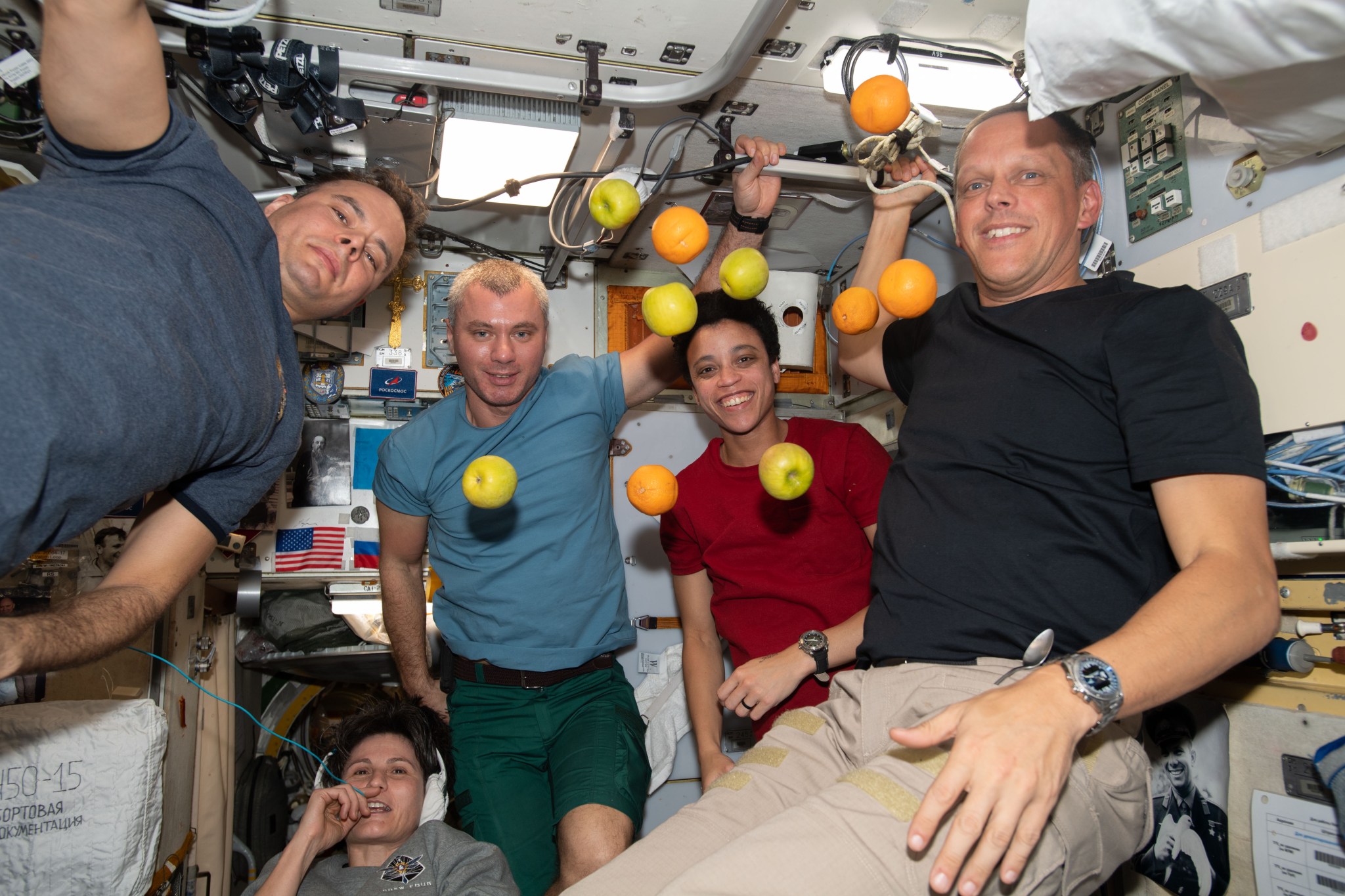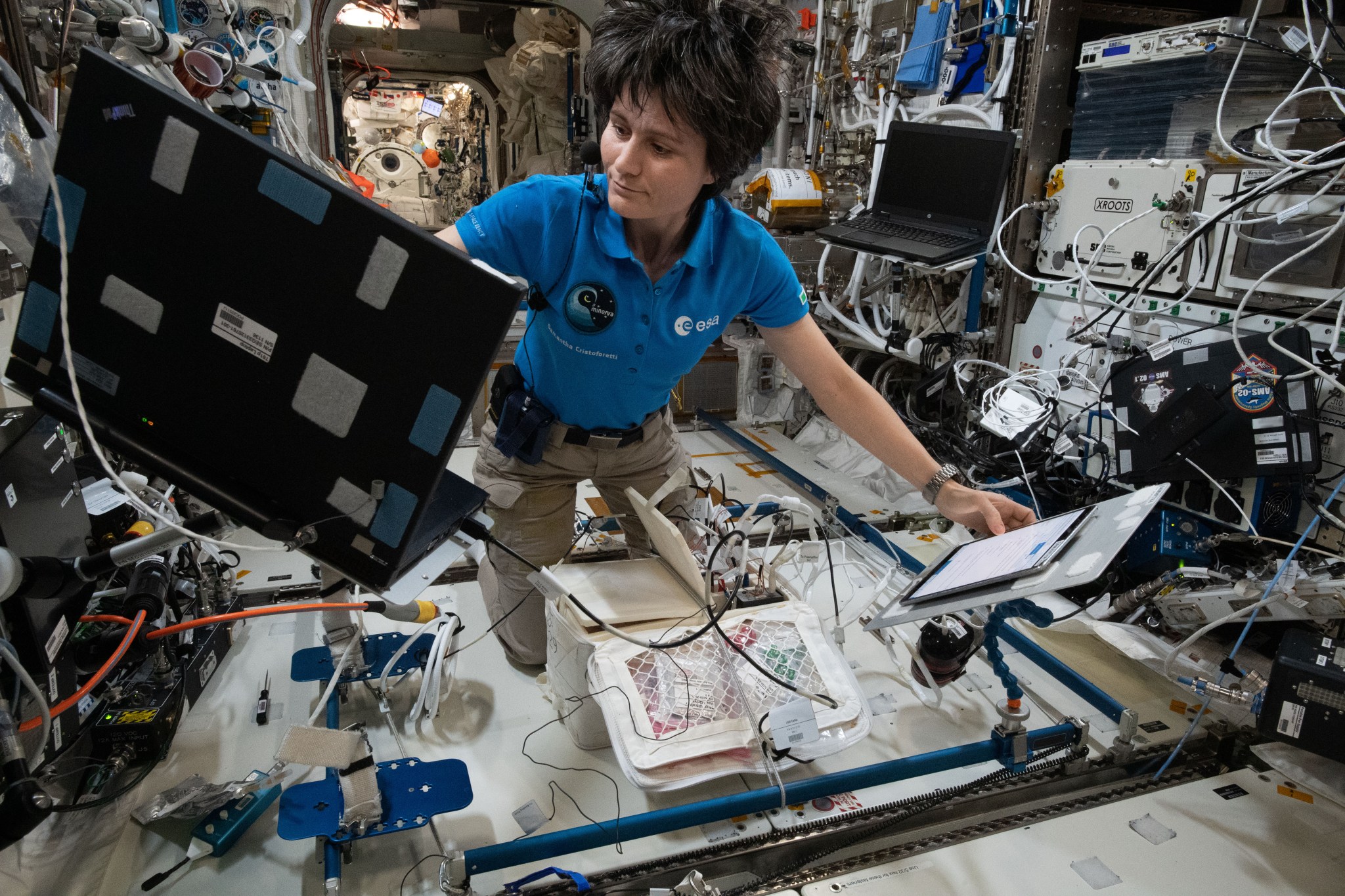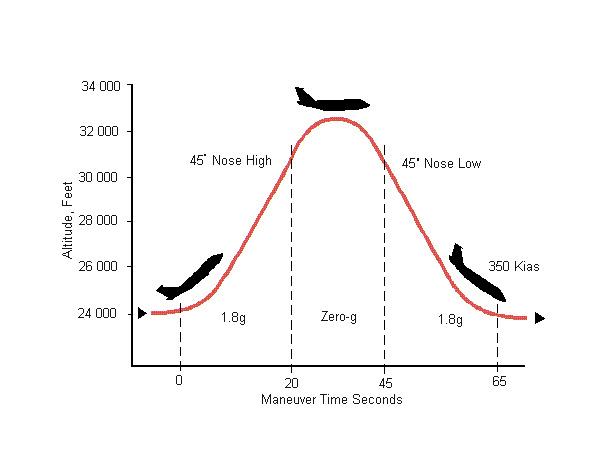This article is for students grades K-4.
In space, astronauts do not walk on the floor like people on Earth do. They float around inside their spacecraft. That is because of microgravity. Microgravity is when things seem to be weightless. “Micro-” means “very small.”
Microgravity is when the pull of gravity is not very strong. In microgravity, it is easy to move heavy objects. Astronauts can even move things that weigh hundreds of pounds with just the tips of their fingers.
How Does Gravity Work?
Gravity is what pulls people down toward Earth. When you jump, gravity makes you come back down. When you are walking, it holds you on the ground.
Is There Gravity in Space?
Some people think that there is no gravity in space. But small amounts of gravity are everywhere. Gravity keeps the moon in orbit around Earth. It keeps Earth in orbit around the sun. The pull of gravity gets weaker the farther apart two objects are. A spacecraft could go so far from Earth that a person would feel very little gravity. But this is not why things float on the International Space Station. The space station orbits Earth at about 200 to 250 miles high. At that height, Earth’s gravity is still very strong. In fact, a person who weighs 100 pounds on the ground would weigh 90 pounds there.
Why Do Objects Float in Orbit?
So why do astronauts float in space? The answer is that they are in free fall. Gravity pulls all objects the same way, even if they are different sizes. If you drop a hammer and a feather on Earth, the hammer will fall faster. But that is not because gravity pulls them differently. Air makes the feather fall more slowly. If there were no air, they would fall together at the same speed. Some amusement parks have free-fall rides. On those rides, a cabin falls along a tall tower. If you let go of a ball at the start of the fall, you and the ball would fall together. The ball would appear to float in front of you! That is what happens in a spacecraft. The spacecraft, its crew and everything aboard are all falling around Earth. Since they are all falling together, the crew and objects appear to float.
How Can Spacecraft Fall Around Earth?
What does it mean to “fall around Earth”? Earth’s gravity pulls objects toward the surface. Gravity pulls on the space station, too. As a result, it is falling toward Earth’s surface. The station also is moving very fast. It moves so fast it matches the way Earth’s surface curves. If you throw a baseball, gravity will cause it to curve down. It will hit the ground soon.
A spacecraft in orbit moves at the right speed so that the curve of its fall matches the curve of Earth. For the space station, that speed is 17,500 miles per hour. The spacecraft keeps falling toward the ground but never hits it. Instead, it falls around the planet. The moon stays in orbit around Earth for this same reason. The moon also is falling around Earth.
Why Does NASA Study Microgravity?
NASA studies microgravity. The studies help show what happens to people and other things in space. Microgravity does things to the human body. For example, muscles and bones can get weaker. Astronauts on the space station spend months in microgravity. Astronauts who travel to Mars would have to live even longer in microgravity. That is because it will take a long time to get there and back. NASA must learn what microgravity does to astronauts. NASA will use this information to find ways to keep them safe and healthy.
Other things seem to act differently in microgravity, too. Fire burns in a different shape. Without gravity, flames are more round. Crystals grow better. Their shapes are more perfect without gravity. NASA performs science experiments in microgravity. They help NASA learn things that would be hard to learn on Earth.
Can Microgravity Be Found on Earth?
Microgravity can be found on Earth, too. NASA uses airplanes to create microgravity for a short time. The airplane does this by flying in up-and-down parabolas. At the top of the parabola, people and things inside the airplane are in free fall for about 20-30 seconds. NASA also uses drop towers to study microgravity. Objects are dropped from the top of these towers. The objects are in free fall as they drop. You can even experience microgravity yourself. How? You can go over a big hill on a roller coaster or ride on a free-fall ride at an amusement park.































